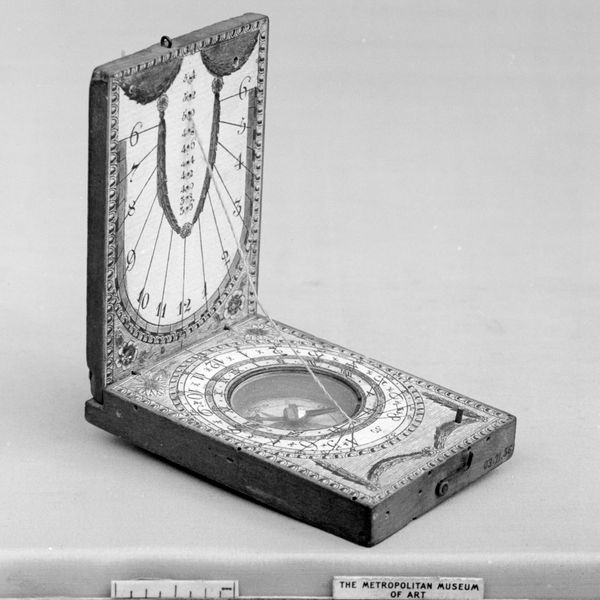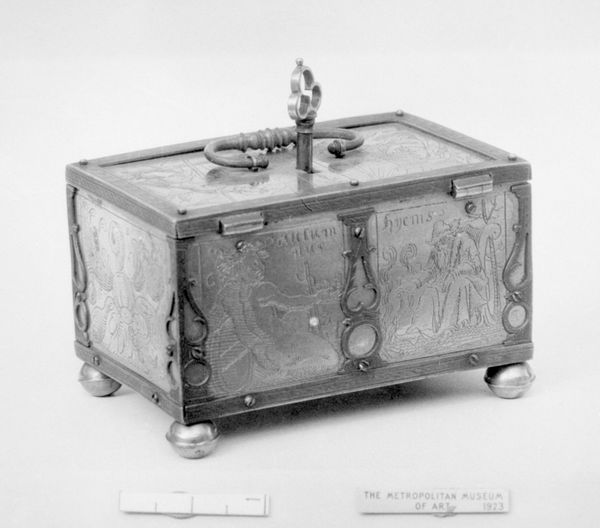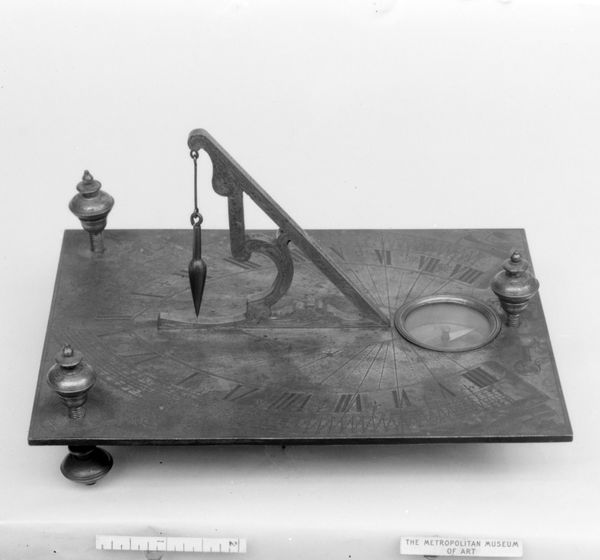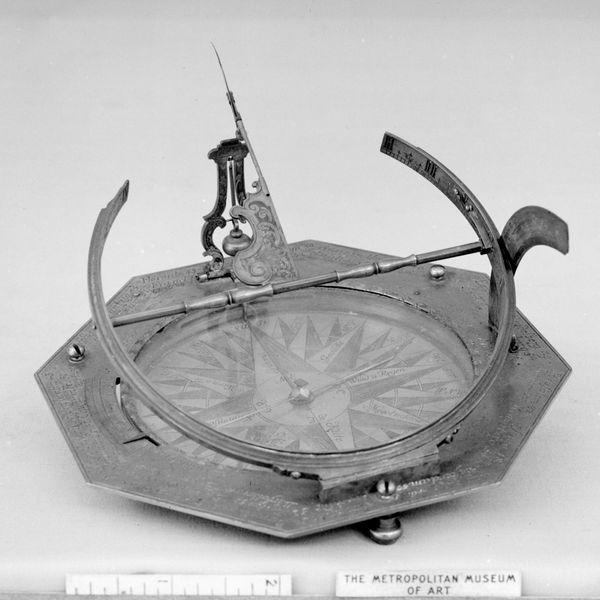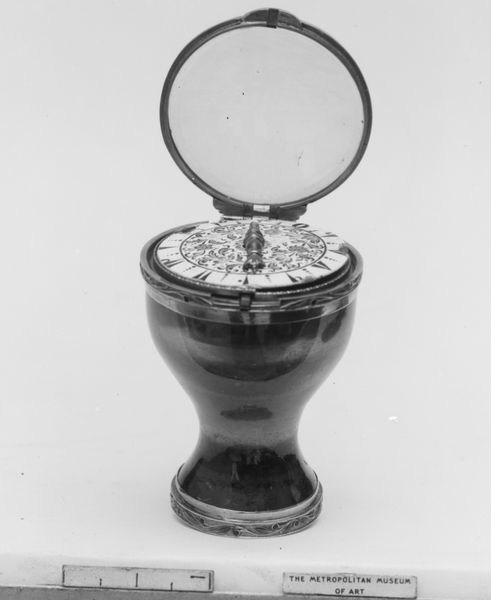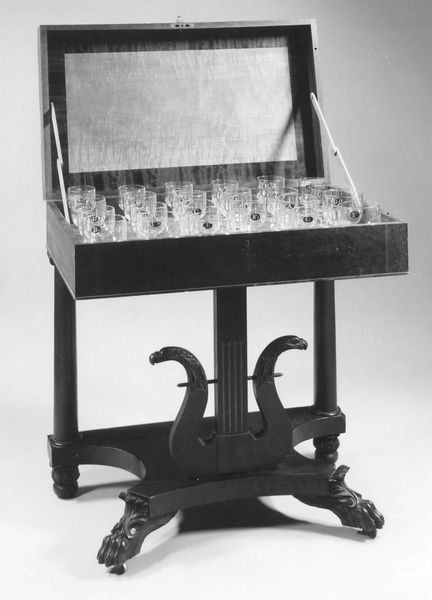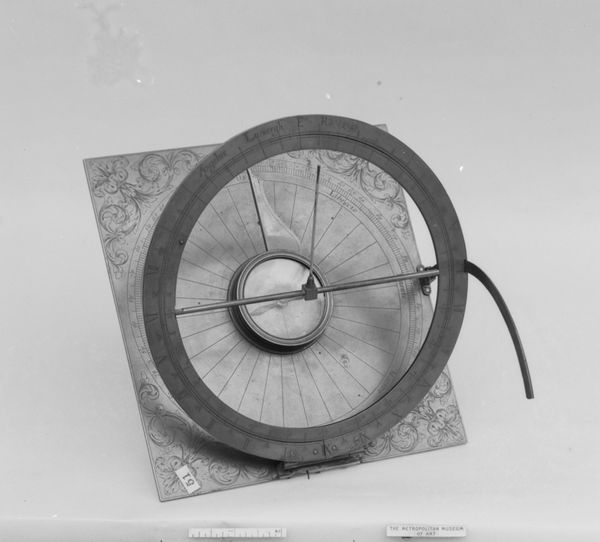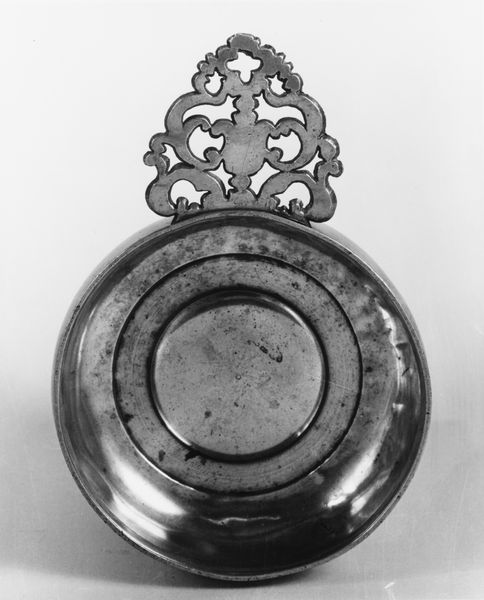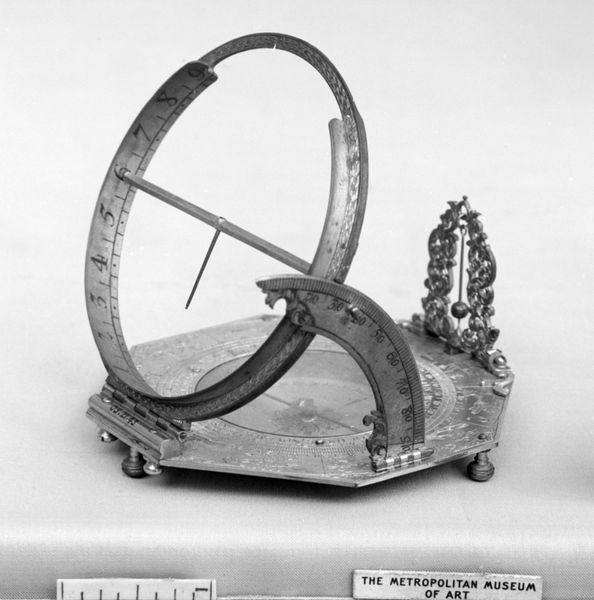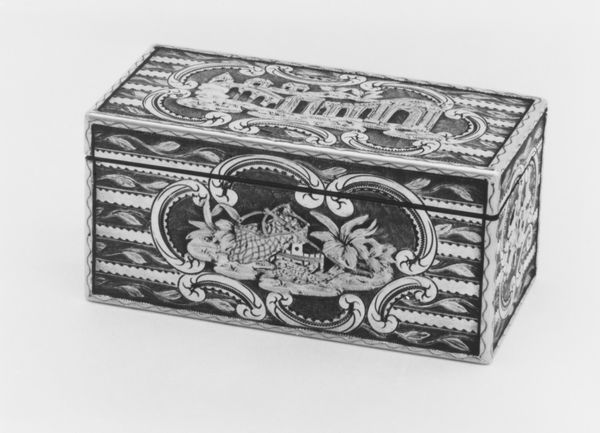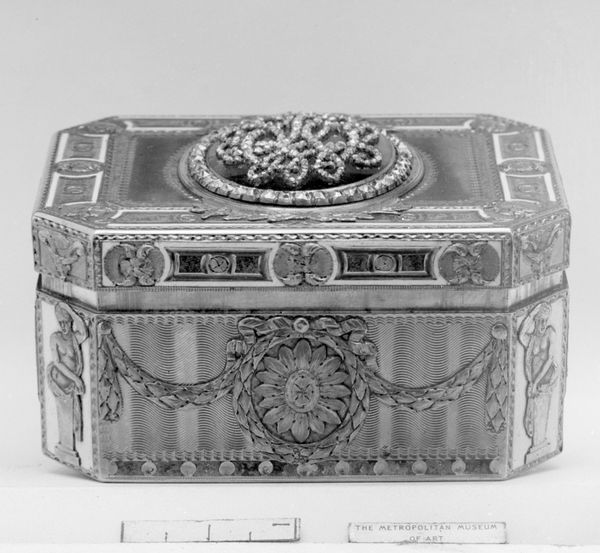
drawing, sculpture, engraving
#
drawing
#
geometric
#
sculpture
#
decorative-art
#
engraving
#
miniature
Dimensions: Overall: 11/16 × 1 3/4 × 2 3/4 in. (1.7 × 4.4 × 7 cm)
Copyright: Public Domain
This portable diptych sundial was made by David Beringer, likely in Germany, around the late 18th or early 19th century. It is made from wood, paper, and metal. The sundial is a beautiful example of how craft and science could intersect. The precision of the sundial's paper face, with its carefully drawn numerals and scales, speaks to the knowledge and skill required to create such an instrument. The use of wood for the body gives it a sense of warmth and tactility, and the brass needle provides a gleaming contrast. It is a reminder that timekeeping was once a much more personal and hands-on endeavor. What's interesting about this object is that it reflects a transition to portable timekeeping, shifting away from relying on church towers or town clocks, which were associated with communal labor. With this object, time becomes personal, individualized, and portable. It represents a move towards individualization and private ownership, reflecting broader changes in society during the period. So, thinking about the materiality and its context, the sundial embodies a shift in how time itself was experienced and valued.
Comments
No comments
Be the first to comment and join the conversation on the ultimate creative platform.
